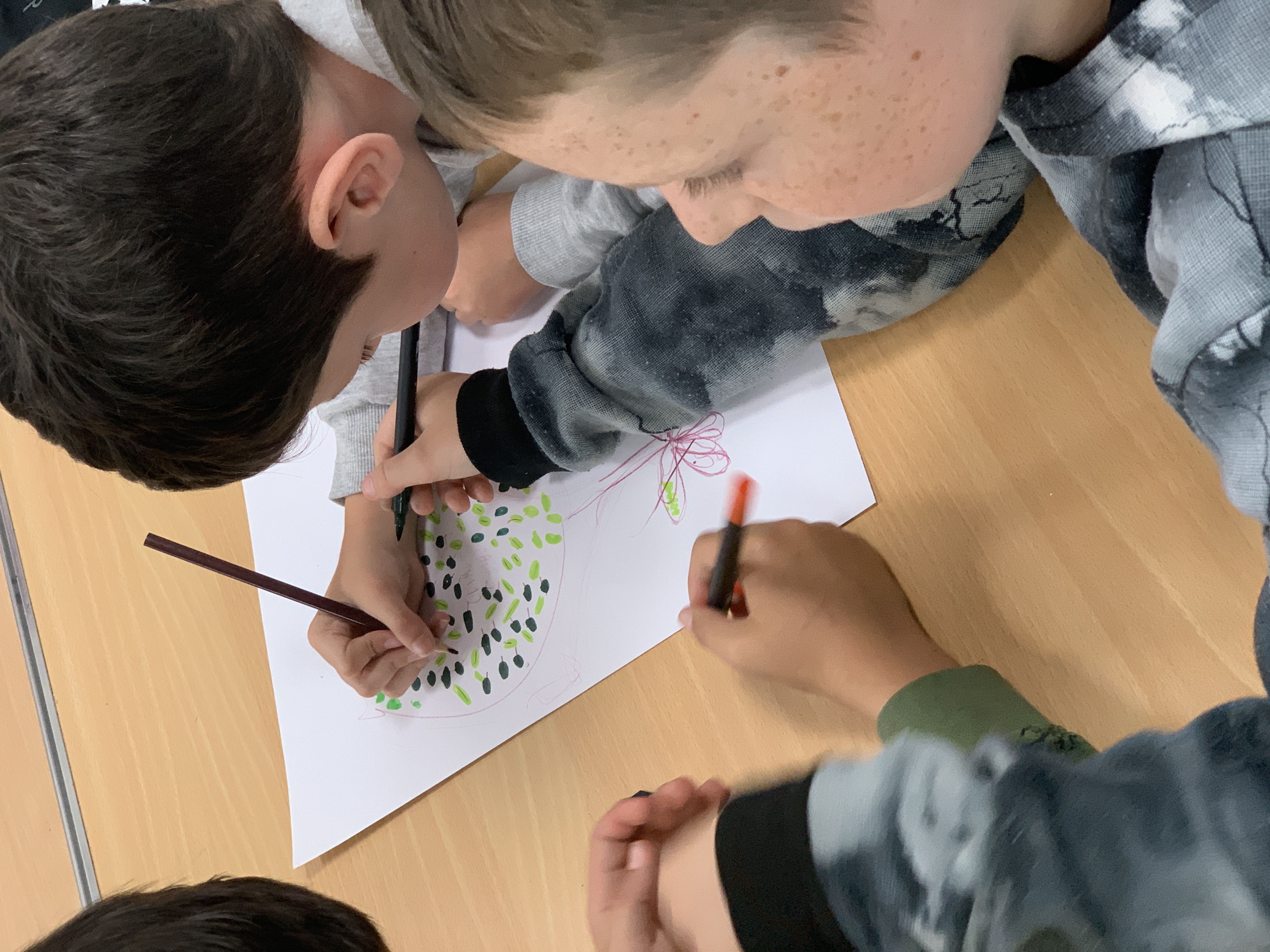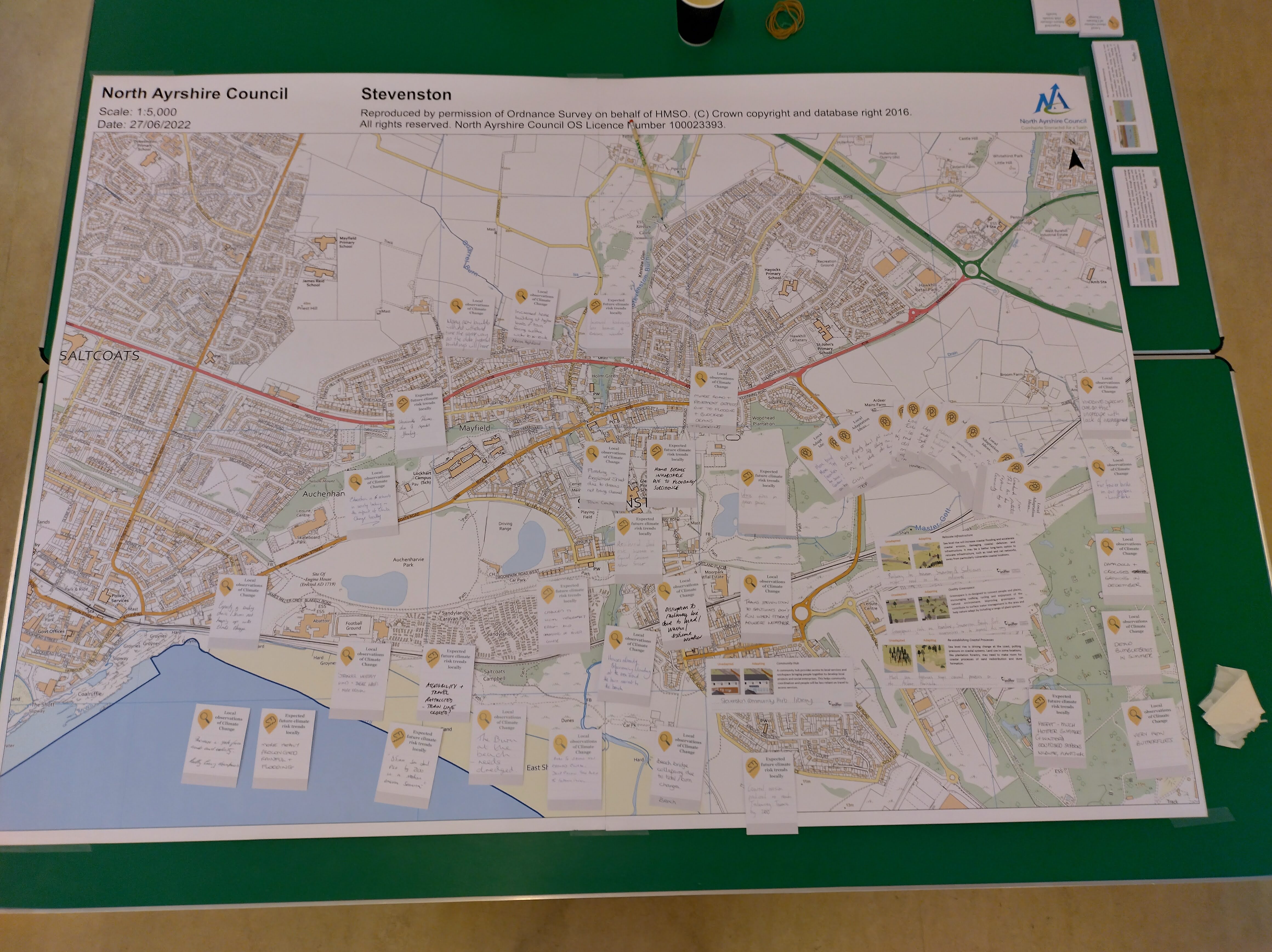The value of (co)design

(16 August) Our Senior Design Officer Laura Hainey highlights the importance of co-design in creating our places, sharing examples from her experience in place-based climate action.
This is not a shiny new blog. It is not a tall glass blog and neither is it a big-budget show-off icon of a blog. When we think of design the immediate thoughts or imagery are often sleek, modern, and potentially big budget. This is a fairly pragmatic, nondescript but fit for purpose blog, because it has been designed so well, and with the users in mind, that you hardly even notice it.
Learning environments designed for pupils
I was recently on a tour of my kids’ school where an atrium space sits in the middle between a two-storey bank of classrooms on one side, and the gym and dinner halls on the other. It constitutes the library and breakout space, and on an upper floor ICT and nurture spaces. Kids cross the space every day without thinking about it.
This perfectly ordinary space was the result of user input. The old 1920s school had a courtyard and so the ethos of a courtyard was incorporated into the new design at the request of teachers and learners.
Hugged by the building this multifunctional space means there are none of what dominated my old Victorian primary school – stone-cold corridors. Where equally Victorian teachers told us heads will roll like ten-pin bowling balls. Design is the pragmatic consideration that learners will feel welcome in their own learning environment, and are able to influence and use it as needed.
The role for design in place-based climate action
I recently worked on the Climate Action Towns project, supporting place-based climate action in nine small Scottish towns. It was about unlocking the potential for climate action in ordinary spaces in small towns - while global targets are being acted on - what can also be done in the meantime, in-between things? You would think design would be far away from this type of pragmatic endeavour, but it was the element that unlocked the creativity and made things happen.
Understanding the climate risks and impacts together in Blackburn
We need to understand the issues in order to be able to act. In Blackburn we were able to design and deliver a collaborative workshop which de-mystified the topic of climate change and how it relates specifically to their place for attendees. This unlocked ideas of how to act and adapt in ways that work for the community and place- which went on to be enshrined in their recently lodged Local Place Plan.

Enabling collaboration in Stevenston
Climate change is too big an issue to act on alone and requires collaboration. In Stevenston through three collaborative co-design workshops, barriers to delivery which existed between the Local Authority and community groups were broken down. The process enabled everyone to understand they were all on the same page and agree who should be delivering on which projects. The co-designed solutions are being acted on now with a community group seeking an asset transfer for a community woodland, and the Local Authority leading on a Coastal Change Adaptation Plan.

Visualising ideas in Benarty
They say you can’t be what you can’t see. In Benarty, Fife, where the ideas from community co-design workshops were refined into a brief for an illustrator who created a vision of a Benarty adapted to the changing climate focussing on creating an improved park area. The community are behind this vision to the extent they are seeking funding to deliver something similar.

Co-design as the solution
So really this isn’t about the value of design, it’s the value of co-design. Using co-design as a catalyst to unlock potential, we can transform ideas and capabilities that already existed but were previously unacknowledged, obscured, or ineffectively communicated in a forum that can go onto deliver. That’s quite good value.
Header image: Youth club climate workshop in Benarty
The value of design
In June 2024, we launched the value of design campaign to talk about what we mean by design and how we think it can improve people’s lives. This article is part of a series of short thoughtful pieces that explores how thoughtful design can transform communities, boost opportunities, and improve overall well-being.
